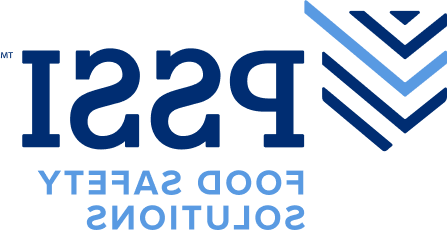When it comes to managing sanitation and food safety inside food processing plants, one of the most overlooked topics related to safety is chemical compatibility and inadvertent mixing. It is the cause of some of the most frequent and catastrophic injuries.
Chemistry is a complex and confusing topic. The chemical names can be long, difficult to pronounce much less spell. For example, take sodium chloride and sodium chlorite. The difference in spelling is just a ‘d’ vs. a ‘t’, but the reactivity is monumental. 氯化钠是一种普通的食盐, while sodium chlorite is a power oxidizer which ignites into flames in a dry state.
To further the confusion, the chemicals are sold under trade or brand names. These trade or brand names have great marketing power, but generally disguise the composition of the product. Unless someone is trained or curious enough to find and read the SDS, there is a lack of awareness for the product composition. Sanitation products are sold as KC-568, KC-644, and KC-410. Intervention products are sold as Promoat® XL, Cecure®, or Citrilow®.
Most of the time the sanitation or intervention teams that are handling these chemicals are not trained chemists, so training and education is extremely important. 然而, high turnover in both the sanitation and intervention industries make it especially challenging. The inconsistency and general lack of knowledge and understanding of the products amongst users is a leading cause of personal exposure and chemical compatibility incidents.
Dr. 托德·科尔曼, Director of Chemical Operations at Safe Foods Chemical Innovations, is dedicated to helping plants solve these issues and minimize as much risk as possible. He and his team of cross-functional experts work together with food processing plants to develop and design customized solutions to help minimize risk with chemical use.
While unfortunately the turnover in labor is not something that can easily be solved, Dr. Coleman has several recommendations to help simplify the training and handling of chemicals to avoid compatibility or mixing issues.
- 散装运送化学品 – Specifically in larger facilities, Dr. Coleman recommends bulk delivery and receiving systems whenever possible. It’s not only a more cost-effective and environmentally friendly solution long-term, but it cuts down significantly on the people that handle the chemicals. This is not feasible for all products, but consideration should be given for larger volume products.
- 使用颜色编码策略 – Color-coding can be a very effective strategy in simplifying the training for chemical products. Dyes can be added to products to see through bulk tanks or bold color-coded packaging can help minimize the mix up of certain products. This type of quicker reference can help with efficiency in sanitation, as well as minimize errors of mixing the wrong products.
- Invest in the safety-first engineering solutions – Work together with your chemical partner to design engineering and automation solutions that are built specifically with safety in mind. Dr. Coleman says that facilities that request the retrofitting of existing tanks often experience safety or performance issues. Safe Foods Chemical Innovations team has designed bulk delivery systems for Peracetic Acid (PAA) and Ajust® (Liquid Caustic). The systems are designed to 1) measure and communicate key parameters (temperature, 压力, 水平, 等.), 2) detect leaks and prevent overfills with interlocking safety systems, and 3) comply with Chemical Federal Anti-Terrorism Standards (CFATS) and other regulatory standards.
Customized engineering solutions obviously can also play a key role in protecting and innovating food safety, 还有员工的安全. Safe Foods Chemical Innovations team focuses heavily on R&D helping its partners solve problems and advance food safety at all 水平s. The team recently developed an innovative solution, adapted from other processing industries, that assists the elimination of debris inside scalder units, significantly reducing the 水平 of microbes, 减少用水, 改善卫生设施.
Be proactive to get ahead of the risks related to chemical use before they happen. Find a partner who has the expertise and experience to help develop customized solutions to solve your needs. Safe Foods Chemical Innovations is a team of professionals ready to help with varied skill sets ranging from animal science to synthetic chemistry to engineering disciplines to formulation chemistry, dedicated to help food processors maximize quality and minimize risk.

